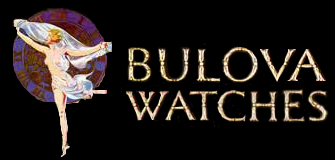Ok if I have a watch with 506900 on the case back how do you get a date from that?
Please and Thank You
In your example, the "5" means it is the fifth year of some decade. . . 1925, 1935, etc. So, for example, if you had a 1930s watch, and the case serial number started with "0", it would indicate 1930; a leading "1" would indicate 1931, etc.
To know which decade, you have to know about Bulova watches in general. You have to know how the cases and dials, etc. were designed through the years, e.g., a case with steps will most likely date to the 1930s and will certainly not be a 1920s watch. That's where experience with the watches and time spent studying the ads will help. Eventually, you will be able to just look at the case and know what decade. That level of knowledge has always been necessary to date a watch, even when using just the movement date code, as most of the codes were repeated each decade.
You can see if the movement helps you identify the decade, keeping in mind that it could be a swap. Not all movements were used during all years, so check the date code on it and check it against the movement database. Then, check that information against the style of the watch and the ads.
The serial number is only useful as a dating mechanism through the late 1940s. Once Bulova started putting the two character date code on the back of the case, the serial number correlation ceased. Some watches as early as 1948 have the two digit code on the case, i.e., "48". In my experience, those watches have a serial number that begins with "0".
Here are some general guidelines for identifying cases by decade (there are exceptions, of course, particularly as you near the end of one decade, crossing over into the next). Nothing I can say here can replace getting to know the ads yourself.
1920s - square or rectangular, no steps (the Lone Eagle, Trojan/Conqueror/Spartan/Cyrano family, Banker, and Treasurer are obvious exceptions to the square/rectangular rule), almost everything is white gold, almost everything is engraved, black leather bands are the norm (for men's models), with mesh becoming popular toward the end of the decade
1930s - stepped, tonneau, hexagonal, long rectangles, yellow gold is the popular choice, but white is also seen; black dials come into vogue later in the decade, engraving is still around but not a requirement like the '20s, link bracelets are extremely popular, along with brown leather bands
1940s - rose gold was very popular, along with yellow and white gold, lots of different and more ornate case shapes, more small round cases, steps have basically gone away, military themes are very popular mid-decade, link bracelets and leather continue from the '30s, while mesh (larger mesh) and expansion bands become popular
After that, use the date code on the case itself to identify decade and year.
There's much more to say to help distinguish the decades--like dial styles (two-tone, exploding), hand and numbering styles (although hands are often replaced with the wrong ones), etc. Case signatures can also help identify the time period, as those changed through the years. There is much more to know and learn, but I'll leave the rest to you.
In reply to In your example, the "5" by NOVA
How about I help you answer your own question?
- The style of the case, movement, hands--everything--indicates that it is definitely after the 1940s, so that would mean the case and movement will have a two-character code telling you exactly which decade and year. So, do you own the watch and can, therefore, get that information?
- The model is called Wrist Alarm, as written on the dial. Look in the watch database under that name, and search the ads for that model. You will find valuable information there. (Hint: start with the watch database.)
P.S. I poked around and figured out why you are asking these questions. Presumably, you asked the seller for more information? Data from the inside of the case back and on the movement is necessary to answer your question.
In reply to Nova? While your online do by will91gt
That's a question for the watchmakers and restorers in the group. In case it helps, there is a pretty nice pic of the movement in the 1969 model posted here: http://www.mybulova.com/watches/1969-wristalarm-2382.
My 1967 version runs an 11AEPC, should you care to research the particulars of that movement.
It is a very nice watch.
In reply to That's a question for the by NOVA

